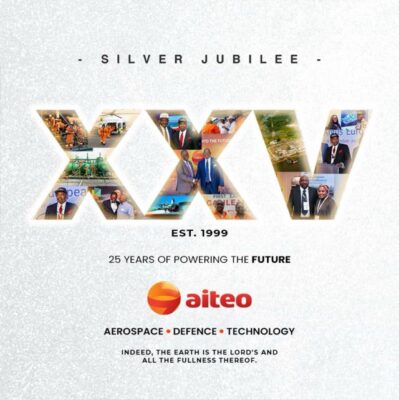Mercy Odochi Agho Leads with Value Engineering Transforming Procurement, Supply Chains

In the rapidly evolving global economy, where supply chains are becoming increasingly complex and businesses are grappling with mounting pressures to control costs, improve efficiency, and uphold sustainability, a fresh voice is bringing clarity and vision to the conversation.
Mercy Odochi Agho, a leading researcher and specialist in procurement and supply chain management, is championing a strategic shift toward value-driven operations.
Her latest research, recently published in the Advances in Industrial Engineering and Management (AIEM) journal, sheds new light on how businesses can revolutionize procurement strategies and supply chain operations by fully embracing Value Engineering (VE) and Value Analysis (VA) methodologies.
The paper, aptly titled “Value Engineering and Value Analysis: Unexplored Potentials in Procurement and Supply Chain Management,” was co-authored by Mojisola Abimbola Adeyinka, Casandra Okogwu, Uneku Ikwue, Sodrudeen Abolore Ayodeji, Chibuike Daraojimba, and led by Ms. Agho. Together, the team provides a detailed analysis of how these methodologies, though historically rooted in manufacturing, are primed to address contemporary challenges across a range of industries.
Reflecting on the motivation behind the research, Ms. Agho is clear about the necessity for a shift in business thinking. “Far too often, procurement is treated as a purely transactional activity focused solely on immediate cost savings,” she explains. “Our research demonstrates that Value Engineering and Value Analysis allow procurement to evolve into a strategic driver—one that fosters long-term collaboration, drives innovation, and delivers sustainable value.”
In the paper, the authors argue that traditional cost-cutting measures, while providing short-term financial relief, often result in compromised quality, weakened supplier relationships, and limited innovation. By contrast, VE and VA promote a systematic, function-focused approach that evaluates the essential purposes of products, services, or processes and identifies how to deliver them at the lowest total cost, without sacrificing performance or value.
For Ms. Agho, this represents more than a methodological adjustment—it reflects a necessary mindset shift. “Organizations must stop seeing cost reduction as an end in itself,” she asserts. “Instead, they need to focus on optimizing value. This means thinking holistically about cost, quality, efficiency, sustainability, and stakeholder satisfaction.”
Tracing the historical evolution of VE and VA, the study explains how these methodologies emerged during World War II to help manufacturers navigate resource shortages and high production costs. Initially confined to manufacturing, they have since evolved to become versatile tools applied across various sectors, including construction, healthcare, technology, and, as Ms. Agho emphasizes, procurement and supply chain management.
Function analysis lies at the heart of both VE and VA, providing a structured approach to evaluate every step of a process to ensure that each function is essential and is performed in the most cost-effective manner. Techniques such as Function Analysis System Technique (FAST) diagrams and value indexing are highlighted in the research as effective tools for uncovering unnecessary costs, fostering innovation, and streamlining operations.
Ms. Agho is particularly passionate about the application of VE and VA in procurement. The study points out that procurement, often underestimated in its strategic role, is uniquely positioned to leverage these methodologies. In today’s volatile business landscape, with supply chains disrupted by geopolitical tensions, fluctuating demand, and environmental concerns, she believes procurement must pivot from transactional negotiations to strategic value generation.
“Procurement decisions should not be driven solely by price considerations,” Ms. Agho emphasizes. “Instead, organizations must evaluate the total value proposition—looking at lifecycle costs, supplier relationships, innovation opportunities, and long-term sustainability.”
By embedding VE and VA into procurement processes, companies can engage suppliers early, develop mutually beneficial solutions, and align objectives to achieve better outcomes. The study illustrates that such collaborations not only reduce procurement costs without sacrificing quality but also strengthen partnerships and foster trust.
The research also highlights how VE and VA complement the digital transformation sweeping through procurement functions today. Ms. Agho notes that as organizations adopt advanced technologies like blockchain, the Internet of Things (IoT), and data analytics, value-driven methodologies offer a structured framework to fully capitalize on these innovations. By combining digital tools with value optimization principles, companies can achieve real-time transparency, informed decision-making, and enhanced risk management.
Beyond procurement, Ms. Agho’s research delves into how VE and VA methodologies can transform supply chain operations more broadly. Modern supply chains, she argues, are more fragmented and exposed to external shocks than ever before. As businesses face mounting challenges such as regulatory changes, market disruptions, and consumer demands for ethical sourcing, there is an increasing need to streamline processes and adapt quickly.
“Supply chains today are under intense scrutiny,” Ms. Agho explains. “Value Engineering provides a systematic approach to identify inefficiencies, eliminate redundancies, and create leaner, more agile supply chains capable of withstanding disruptions.”
The paper underscores how VE and VA not only enhance operational efficiency but also help companies embed sustainability practices into their supply chains. Ms. Agho believes sustainability is integral to business strategy, not an afterthought. She emphasizes that organizations can use value-based methodologies to reassess how materials are sourced, reduce waste, and meet environmental, social, and governance (ESG) requirements.
“Sustainability is no longer a corporate responsibility checkbox,” she states. “It is a strategic differentiator. Value Engineering enables organizations to rethink how they design products and processes for long-term environmental and social impact.”
To validate their arguments, Ms. Agho and her co-authors present real-world case studies where VE and VA have been successfully applied. One such case highlights the use of Building Information Modelling (BIM) alongside Value Engineering in a major construction project. The project achieved a 10 percent reduction in both costs and duration, while also delivering superior quality and enhanced stakeholder satisfaction.
Another compelling case study explores the adoption of VE principles in green component procurement within Taiwan’s high-tech manufacturing sector. Through collaborative supplier engagements and rigorous function analysis, these companies achieved substantial cost reductions, improved production efficiency, and strengthened compliance with environmental standards.
Ms. Agho is confident that these examples illustrate the broad applicability of VE and VA across industries. “These case studies demonstrate that organizations willing to embrace value-driven strategies consistently outperform competitors,” she observes. “The benefits are clear—enhanced efficiency, lower costs, stronger partnerships, and improved sustainability performance.”
However, the research does not shy away from addressing the barriers organizations may face in adopting VE and VA. Ms. Agho acknowledges that resistance to change, lack of technical expertise, and siloed organizational structures often hinder successful implementation. She emphasizes that overcoming these challenges requires strong leadership, cross-functional collaboration, and a commitment to skills development.
“Cultural change is often the most significant obstacle,” Ms. Agho explains. “Organizations need to foster openness to new ideas, invest in training, and empower teams to collaborate across departments. Leadership support and clear communication are essential to create an environment where value optimization thrives.”
In the concluding sections of the paper, Ms. Agho and her team lay out several recommendations for future research. They call for expanded case-based studies in various industries and regions, particularly in developing economies where VE and VA remain underexplored. They also advocate for deeper examination of how emerging technologies like artificial intelligence, machine learning, and big data can be integrated with value-driven methodologies.
Furthermore, Ms. Agho stresses the importance of developing sustainability-focused VE models that support ESG goals and ensure organizations remain compliant with increasingly stringent regulations. She believes that further research in these areas will be key to keeping VE and VA methodologies relevant in a rapidly changing global business environment.
As the principal voice behind this influential research, Ms. Agho concludes with a decisive call to action. “The future of procurement and supply chain management lies in value-driven strategies,” she affirms. “Value Engineering and Value Analysis are not optional extras—they are essential frameworks for building sustainable, resilient, and profitable organizations. The time to embrace them is now.”
Her leadership in this field is sparking critical conversations among business leaders, policymakers, and procurement professionals alike. As industries face mounting pressure to navigate uncertainty, Mercy Odochi Agho’s research offers a timely, actionable roadmap to success.








